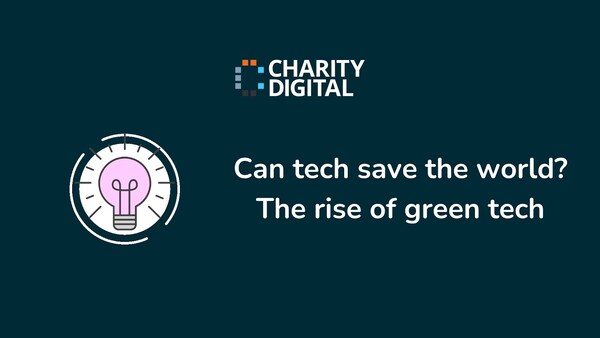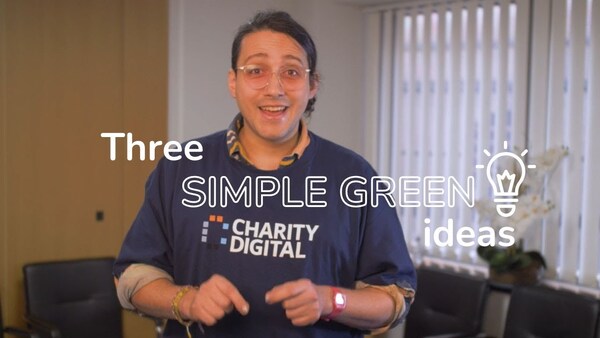Insights
INSIGHTS
All Topics
How to develop your sustainability policy
We explore some top tips to help your charity develop a robust, evolving, and practical sustainability policy
There’s agreement among charity leaders that sustainability is critical. Jenny Hopkins, a charity sector consultant, shares the message on working towards better sustainability practices: “The shift involves rethinking completely how we approach charitable work and incorporating environmentally-friendly and socially-conscious initiatives to ensure a lasting positive impact on both communities and the planet.”
Policy is a custom approach for charities to connect sustainability with their purpose. We’ve collected top tips on how to compile a strong sustainability policy.
Start sustainability from the top
Board members can drive the sustainability policy. On her blog, Zoe Amar writes that the heart of the matter is about ensuring the longevity of operations and service to beneficiaries.
As exemplary leaders, board members should consider that: “Every decision you make as a charity should consider environmental sustainability because all your decisions will impact upon the environment in some way.”
Make climate action a key feature
Following from Zoe’s conclusion on connectivity with the environment, climate action should be a key feature of the sustainability policy. The policy should outline areas of impact.
For organisations starting out, greening the office is a small way to improve sustainability. Charities further along should look at emissions reporting and actions towards Net Zero.
Decide on critical themes
Not all sustainability policies tackle the same issues. But common pillars include energy usage, community engagement, sustainable procurement, waste minimisation, board and staff diversity. Stakeholders should determine which pillars are most material to operations.
Outline your scope and priorities
To be effective, outline the scope and top priorities. For scope, consider what sustainability means to the charity and the extent of action. Then, discuss with stakeholders, board members, and beneficiaries on what the priorities are.
The priorities may then have KPIs attached to them.
Use SMART goals to measure sustainability
When deciding on ambitions, think about SMART goals. These are specific, measurable, achievable, relevant, and time-based targets. An example of a SMART goal would be to increase use of renewable energy from a starting percentage to 100% over the next year.
Check out sustainability templates
Don’t reinvent the wheel. When it comes to codifying the sustainability policy there are many templates available.
Charity Excellence has a cache online that can serve as a backbone to fill out.
Get help from sustainability consultants
There may be circumstances in which developing a policy internally is challenging. Consultants can help leaders frame the issue.
Bioregional helped Sue Ryder develop its first-ever sustainability policy despite sprawling operations and seemingly uncoordinated services. Together, the team explored internal stakeholders and market peers to come up with a meaningful programme. They then did an emissions baselining which ultimately led to the charity to setting the stage for a Net-Zero plan.
Implement the sustainability policy
Once the policy is finalised, take the time to share and educate staff on what it means. Explain the rationale and impact of the new actions. Policy compliance is important.
Use an enterprise sustainability platform
Go digital as platforms support policy development and actions. Use Greenly for emissions tracking, as it measures Scope 1, 2, and 3 categories. On top of that, it is particularly advantageous for smaller organisations.
For larger operations, SAP Sustainability Management is a familiar tool for those using the accounting functionality. The SAP platform integrates supply chain, regulatory reporting requirements, social responsibility and other sustainability and ESG targets.
Use different approaches for sustainability
Partnerships are a great way to push sustainability action further. Harriet Lamb, CEO at Ashden, a sustainability charity, remarks on charities working with others to deepen impact.
She notes that The Welcoming, a refugee charity, helps beneficiaries integrate by not only showing them around, but how to grow food in the community garden and save on fuel.
Another charity, Repowering focuses on installing renewable energy in housing estates. By combining purpose and sustainability, both charities have driven their actions even further.
Track and measure progress
Once the policy is in place, charting progress keeps organisations focused on the end-goals. Include in the reporting how the goals are advancing. Agree with stakeholders at which frequency updates are done. At a minimum, share on the impact report where sustainability is across each of the SMART goals.
Encourage staff to go beyond
Share with staff ways to go beyond the policy. Many staff and young people feel compelled to do more than just what’s written down. WWF UK suggests ways in which individuals can make an added contribution. They offer ways to conserve lunch items and business travel. WWF UK also highlights participating in Earth Hour as an occasion to drum up enthusiasm.
Christine Chiu
More on this topic
Recommended Products
Featured Products
Our Events
Charity Digital Academy
Our courses aim, in just three hours, to enhance soft skills and hard skills, boost your knowledge of finance and artificial intelligence, and supercharge your digital capabilities. Check out some of the incredible options by clicking here.





















